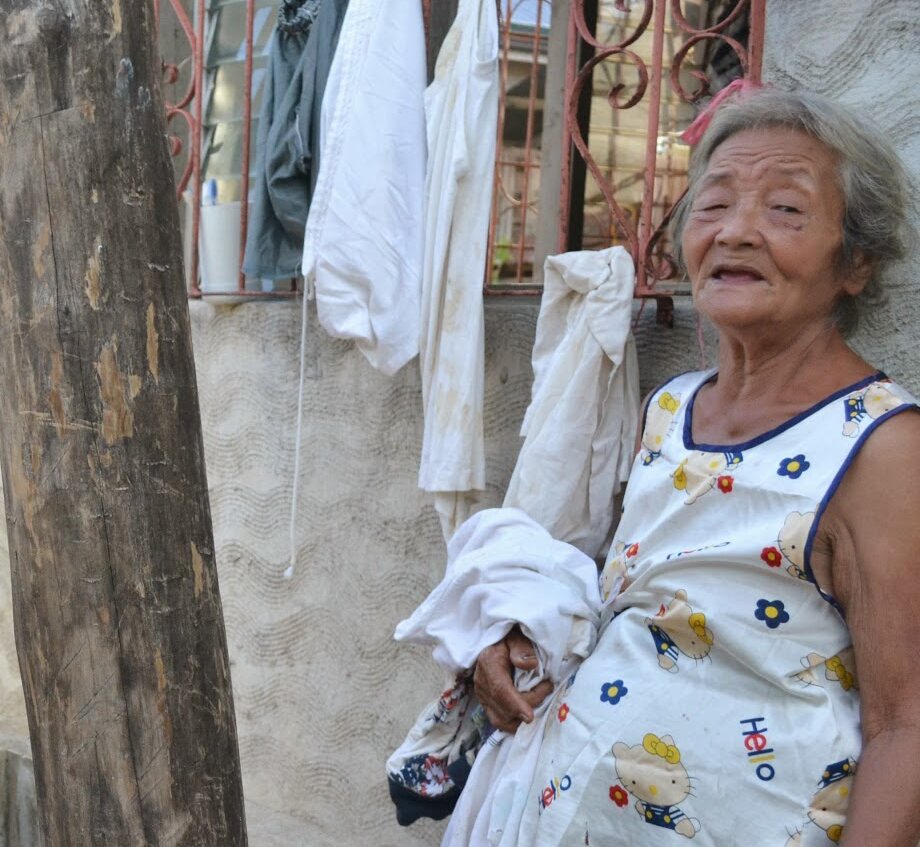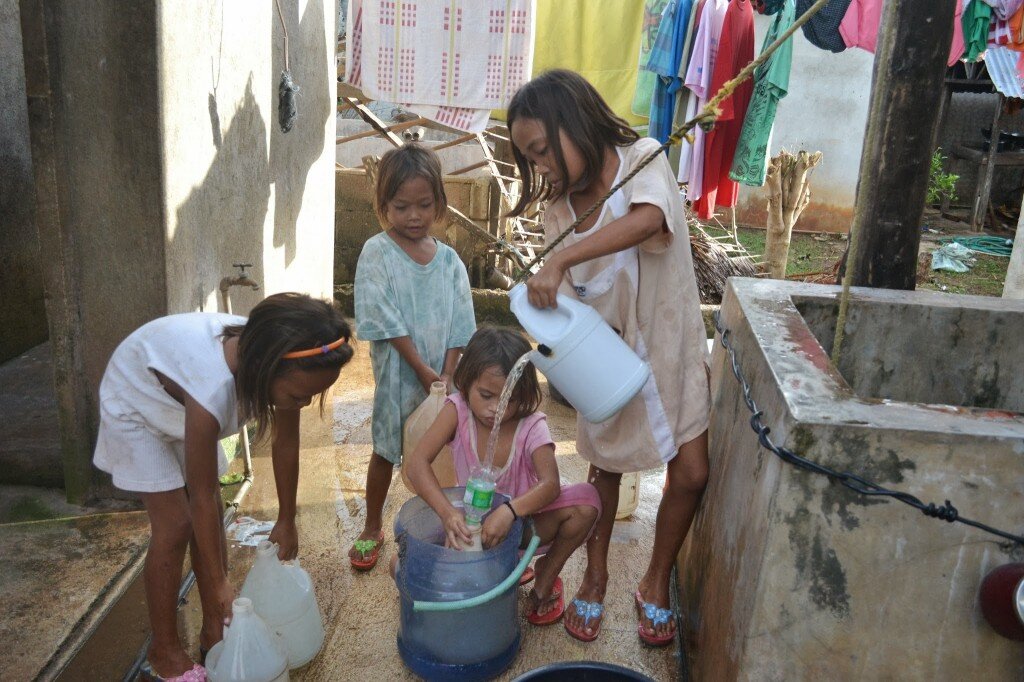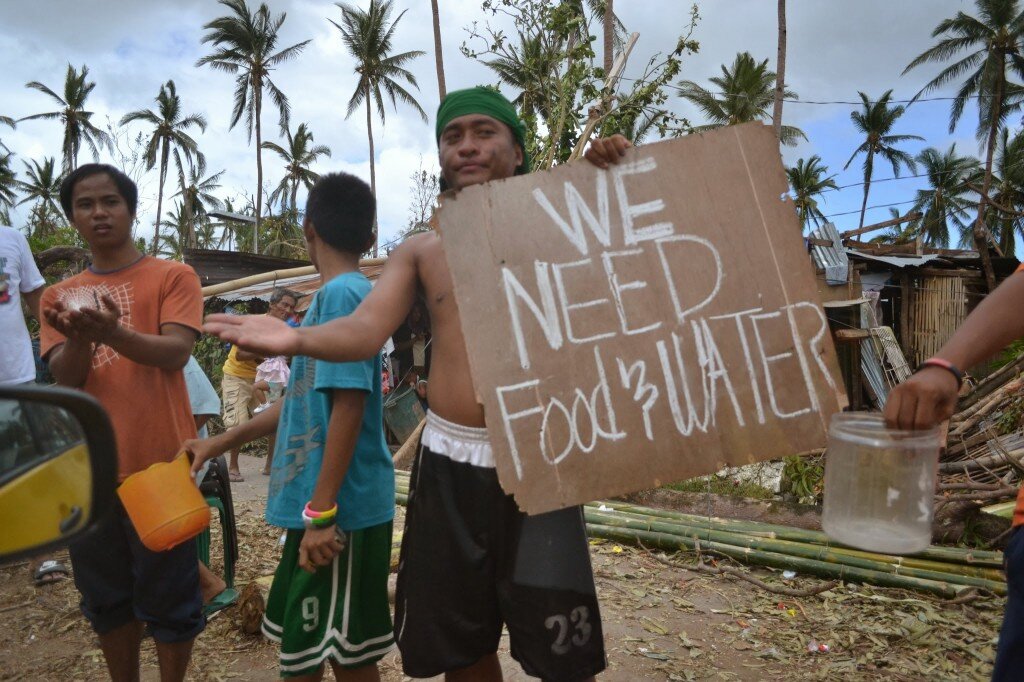人道救援, 亚洲其他地区2013年11月13日
Philippines typhoon: In search of safe water to drink (只有英文)

乐施会
乐施会是国际扶贫机构,致力透过政策倡议、社区扶贫及人道救援服务,与大众共建「无穷世界」。
Meet the Mondejar sisters: Nelia, Sarah Jane and Rizza Mae. They are aged 10, 8 and 5 respectively. Next to them is their friend, Jennylyn Pepito, 6 years old. They are all housed in one of the classrooms of Daanbantayan National High School, which currently serves an evacuation center for 160 families on Cebu island.
The Oxfam assessment team chanced upon them while they were crossing the street on their way back to the evacuation center. They were carrying a gallon of water each. Rizza Mae, who is only 5, lags behind, barely keeping up with her elder sisters. It turns out, they are the ones assigned to fetch water for their Moms who were in charge of cooking their food.
No electricity to run water pipes
“I followed them as they made their way back after emptying their gallons in a pail outside their room,” a member of the Oxfam assessment team reports. “They crossed the street again, wove their way among houses to get to a well in one of the houses further back.”
“There I met Nanay Teofila Melendez, 82, who owns the well. She told me that from 2 PM till late in the evening, and even early dawn, the people from the evacuation center would find their way there to fetch water. She told me they only used it for washing given that it’s mixed with salt water. However, with no electricity these days to run their water pipes, they are left with no choice but to also use it for drinking. Nanay Teofila said they boil the water prior to using it for consumption.

Nanay Teofila Melendez, 82 who owns the well. She told me that from 2 PM till late in the evening, and even early dawn, the people from the evacuation center would find their way there to fetch water. She told me they only used it for washing given that it’s mixed with salt water.
Drinking salty water
“While I chatted with Nanay Teofila, I see the kids happily getting on with the task. Nelia, being the oldest and the tallest, takes on the job of drawing water from the well. She then fills each gallon. When all 4 are filled, each girl would pick up one and then begin their exodus again.

The Mondejar sisters Nelia, Sarah Jane and Rizza Mae, and their friend Jennylyn Pepito, draw water from a well. They are all housed in one of the classrooms of a school which currently serves as an evacuation center for 160 families displaced by Typhoon Haiyan in the Philippines. (Photo: Tata Abella-Bolo / Oxfam)
“I asked the girls how often they would fetch water in a day and they all replied, ‘Napu!’ which means ten times in Cebuano. They said they fetch water in the morning, during lunch and then in the afternoon as well. When I asked them whether, like Nanay Teofila, they also boil the water for drinking, their mother and other women in the center replied they don’t bother anymore. They said they only have enough fuel for cooking food and when they get thirsty, they just drink the water as is. When I pointed out that it’s part salty, they all replied they hardly have any choice, given their situation.”
Among other measures to prevent the spread of diseases in the aftermath of Typhoon Haiyan, Oxfam is sending water treatment gear from Manila to areas affected by the Typhoon to make water safe.

Among other measures to prevent the spread of diseases in the aftermath of Typhoon Haiyan, Oxfam is sending water treatment gear from Manila to areas affected by the Typhoon to make water safe.
